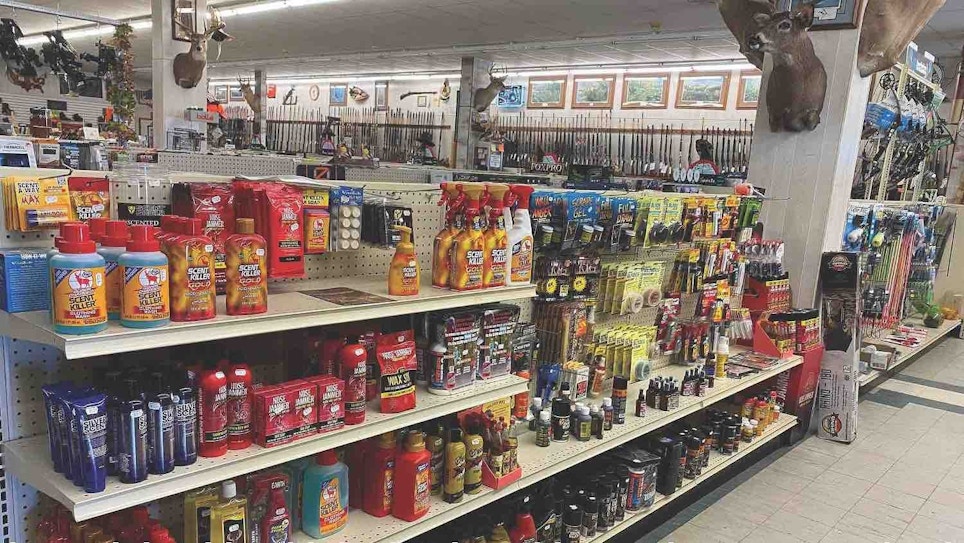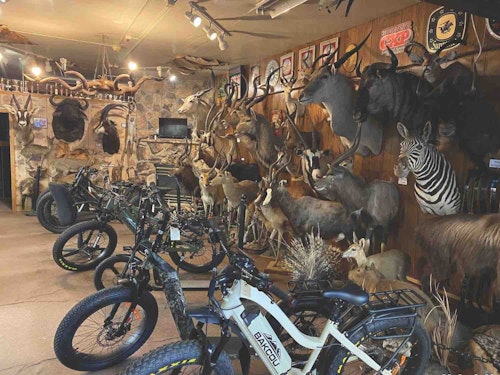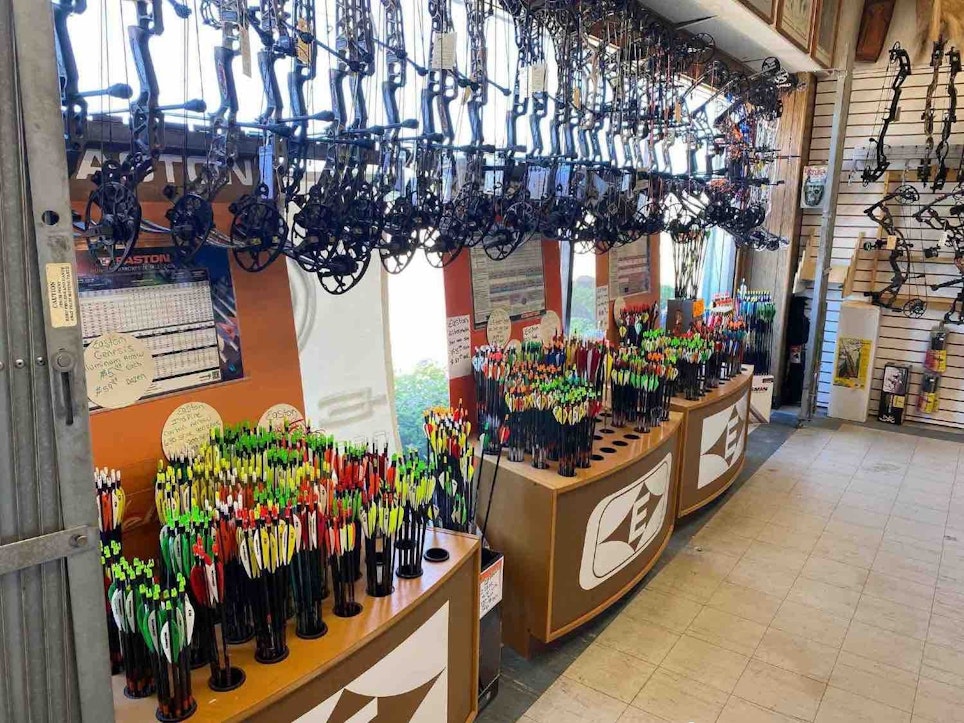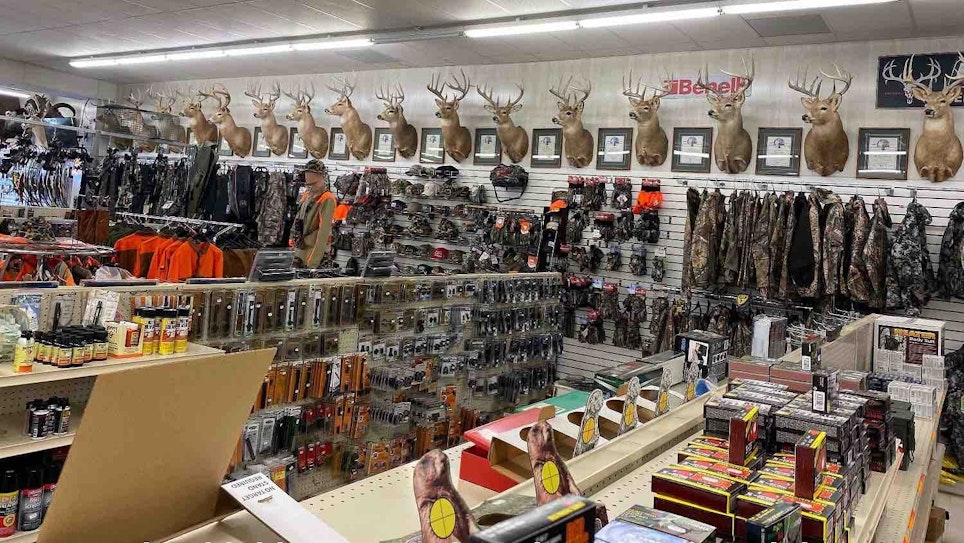Inventory played a significant role in shaping my business savvy at an early age. From junior high through college, I worked at my father’s implement shop. Between classes, weekends and even evenings, I answered the call when farmers required a quick fix to keep putting commodities on the tables of Americans and others across the globe.
Farm implement parts differ greatly from the compounds, crossbows, traditional bows and accessories found in archery pro shops, but the concept stays the same. You need items on hand, including high- and low-demand choices, in inventory for business to succeed. Seasonal gear, new product offerings and items that may be needed only rarely need to be stocked to keep consumer confidence high that they will be served at your shop.
In my early implement career, the struggles of inventory were real. Although we used a computer system to monitor inventory, the system was decades from being refined, and all the parts were hand counted, type entered and ordering was completed via fax for speediness. Still, I knew that during spring we would go through dozens of planter bearings and cultivator shovels by the boxload. Summer meant hydraulic hose urgencies and, during fall, you better have the belts, sprockets and feeder chains to keep a combine running 24/7.
Archery pro shops see similar runs. Winter and spring often see surges in new bow sales as the new models replace last year’s offerings. During summer, archers demand arrows as the preseason practice takes off in earnest. During fall, well, almost anything can go wrong as equipment goes beyond the manicured shooting range and into environments that test both tackle, and hunter.
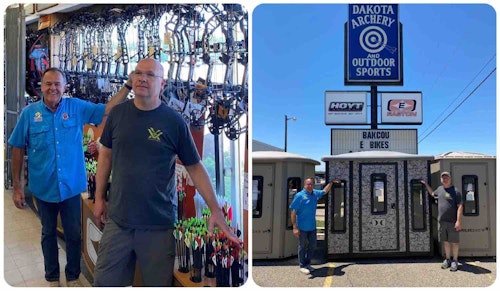
Have a Plan
First, you need to have a plan to order the right products, keep it in stock and have it arrive in an orderly manner. For new startups, the basics of inventory could be a challenge, but even seasoned veterans in the archery pro shop realm work to fine-tune inventory perfection throughout their career.
Co-owners Bruce Cull and Scott Asse, operate Dakota Archery and Outdoor Sports in Yankton, South Dakota. The duo celebrates 40 years of business this year with service that extends from South Dakota, through Nebraska, Iowa and beyond. As their reputation for high-quality service and customer base grew, so did their store. Doors are open 7 days a week with two fulltime staff and five parttime employees.
“We would be considered a four-season outdoor sporting goods store,” Cull explained. “Over the years we have grown and expanded. We started as just an archery pro shop with indoor lanes, and have been an NFAA (National Field Archery Association) pro shop commercial range since our start. Over the decades, we’ve tried several new lines of outdoor sporting goods and stuck with those that proved themselves. Today, we are a primary archery pro shop and all things archery, bowhunting, recreational shooting, 3-D, indoor and outdoor target, Olympic, crossbow, traditional and bowfishing. But as we grew, we added retail firearms and related accessories. You can also shop for clothing, outerwear, boots, optics, fishing gear — it can all be found in the store. We even have game processing, locker space and taxidermy onsite.”
With such a wide variety of services, Dakota Archery understands that managing inventory is everything to serve customers who expect to find what they need. Past sales records, insight from company representatives and customer requests all play into the schematics of inventory, but Cull understands inventory management intertwined with customer service constantly evolves.
“Over the years, one of the biggest lessons we’ve learned is there is never enough time considering the ever-changing market,” Cull said. “The technology advancements and improvements have been overwhelmingly awesome. It’s of paramount importance to stay on top of product knowledge to provide the customer with the information and service necessary.”
The technology boom means stocking, restocking and inventory supervision requires any store to stay on top to avoid overstocking a product, or running out of an important item. Sometimes circumstances out of your control spiral inventory into a tizzy. Cull recalls some of the worst overstocking woes come about when a company closes yet has a product with demand. In situations such as this, Cull must gamble.
“Absolutely you sometimes feel you are overstocking or overinvesting in inventory,” Cull said. “The ‘gut feeling’ is just that, and over the years you hope you improve. However, no one has a crystal ball! Probably the best examples of overstocking have been directly related to manufacturers going out of business. This is, of course, bad for everyone. Obviously, it affects the manufacturer ultimately, distributors, dealers and the customer also feel the effects.”
Code All Merchandise
As I discovered back in the early 1980s, computer programs had a future in inventory management. Unfortunately, those early systems required loads of work and were not integrated with sales to track outgoing purchases or incoming stock with digital diligence. More than once I coursed through the parts aisles to discover that the very tractor bushing I needed was out of stock. Luckily for me, I was parttime and able to blame it on the fulltime employees, but that did not appease an angry farmer with delayed fieldwork.
Today, point of sale (POS) systems fuse everything together if you invest in the proper equipment. This is especially true with technology such as mobile scanners, purchase registers, inventory data systems and automated ordering that work simultaneously to keep your business always in stock. Your POS may be as simple as a credit card scanner attached to a laptop or a system that accounts for all sales, cash or credit, and spontaneously updates while ordering. Cull and Aase have experimented with several POS systems and admit they need to update. Their secret is not allowing too many cooks in the kitchen with the system they currently operate on.
“We have contemplated many different POS systems and software, but have stayed with a basic system,” explained Cull. “Having both owners involved on a daily basis and only a few employees has allowed us to continue this system of detailed inventory with good results. We do feel, however, it is inevitable that sooner than later we will be implementing an updated system. ‘Gut feeling’ is still what has made us successful; but with an updated POS system it will just make it more cost saving and efficient.”
Even with utilization of a POS system, limited personnel having their hands involved to reduce confusion, Cull admits that inventory management is time consuming and never ending. That alone has the driving force in their review of a future POS upgrade.
“This is a perpetual task, and although we have never tracked exact time, my best guess is it accounts for 3-4 hours daily,” Cull said.
Hopefully, your POS and other integrated aspects of inventory regulation keep you on track, but paying special attention to the top sellers can make your day more profitable. In business, many proprietors follow an ideology referred to as the 80/20 rule. The basic presumption of this rule is that 80 percent of your profit arrives from 20 percent of your stock. This makes inventory a high stakes game for the 20 percent of those items always being in stock. Shortages in that 20 percent array of products could easily mean the difference between success or failure in a mom-and-pop archery pro shop. Understanding how many of these widgets you sell yearly, monthly, weekly or daily needs to be scrutinized like a virus under a microscope. Cull understands the 80/20 rule and although he tweaks the ratio, much of Dakota Archery’s sales simply come down to longevity of the product.
“For us, I would say the 80/20 rule is more like 75/25 or 70/30,” Cull said. “Year in and out, we see consistent sales in arrows and accessories. These are more of a commodity and less expensive than bows. Therefore, customers are changing these out more often. Additionally, bows, from a strictly quality standpoint, will last a long time. And of course, some boast lifetime warranty. Obviously, the latest technology changes still drive bow sales when the economy is good. And as a full-service outdoor stop, quality outerwear and optics have become incredibly valuable and important as top-selling products.”
Modern Day Inventory Woes
Inventory woes could be the result of disorganization, poor bookkeeping or any number of other business-related issues. They also could be the result of national or international circumstances. From 2021 and continuing into 2022, the supply chain dilemma has encumbered shipping from compass points on the globe. Various elements keep the unusual circumstance in play, including the pandemic, but it doesn’t matter the cause. For you and your customers, the supply chain chaos creates pandemonium in your inventory. And it is not an issue you can solve with a quick email.
Another conundrum that easily interrupts inventory are rising fuel prices. At the writing of this article, fuel prices have nearly doubled, causing shippers to rethink every load of consumer goods being transported from coast to coast. From overnight delivery to monthly distributions from warehouses, all have been impacted. Plus, prices increase due to increases in the cost of shipping. Inflation is at a 40-year high with no reverse in the foreseeable future. For Cull and Aase, the current state of the nation definitely affects inventory, pricing, customer service and every aspect of business.
“Yes, the ongoing supply chain situation has affected our business,” Cull said. “It has been a constant moving target. It has tested our patience, increased our resourcefulness, expanded new and different product lines, and eliminated some. Buying American has always been challenging but has proven more important and vital than ever.”
As business owners, Cull and Aase rank the ongoing economic situation as being close to the top for hurdles they have had to overcome for continued business success. Still, they have weathered other economic winds during their 40-year business run. In addition to the economic climate, they have also run up against conservation issues and even fought through the political issues of archery equipment, especially the progressive march toward more advanced technology integrated into the sport. Like most concerns, debate, political change and a thorough review will help solve the current state of the economy, believes Cull.
“We have seen an incredible change of recent, but the overall situation is moving toward normal now, at least in our business,” Cull said. “Bows, arrows and some accessories had been the most challenging items to keep in stock, but are close to normal now. The biggest concern now will be the economic issues facing the entire world.”
With my early introduction to the importance of inventory, it is easy to see that staying on top of your product supply is vitally important to economic success. Farming is different than archery in many aspects, but to prosper in any business, you need the goods to make the cash register ring.
Sidebar: Archery Trade Association Assistance
Business climates change like the wind. Although retail giants such as Amazon or Bass Pro Shops have the magnitude to ride out most rough winds, a small archery pro shop could fail given a rough economic ride. Although you can find nearly any small business advice online, sometimes the best advice comes from those who live the same life as you with an economic return based on the same product.
The Archery Trade Association (ATA) is an organization focused on helping the archery trade and explains it via their mission statement: “We exist to inspire growth, increase participation and preserve the sports of archery and bowhunting.”
Because of this, the ATA provides helpful insight on all aspects of archery, including business. For instance, in a recent article, “Ways Covid-19 Changed the Industry and How to Adapt Moving Forward,” a series of helpful business steps was outlined within.
“For manufacturers and retail shop owners, the best way to address any lack of inventory or delays is through honest communication with customers. A study by Edelman showed that 81 percent of consumers say they need to trust a brand to buy from them. Whether you’re facing a backlog on getting a product or slow shipping times, communicate the facts with your customers. Customers are smart. They’ll know if you’re telling the truth. And if you don’t have an answer, that’s exactly what you should tell them.”
Simple but sound advice such as the above, is some of what you can expect through a partnership with ATA. If you are looking for additional support to move forward with your business, consider a membership in ATA (www.archerytrade.org).
Images courtesy of Dakota Archery/Bruce Cull
